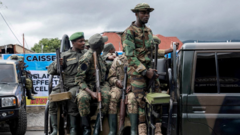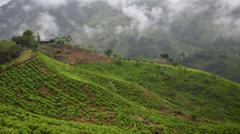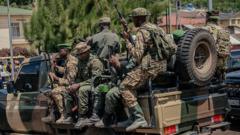Since the military coup in Myanmar, a significant escalation in resistance efforts has led to the detention of thousands of prisoners of war by rebel forces, amidst limited resources and makeshift prison conditions.
Understanding the Dynamics of Prisoners of War in Myanmar's Ongoing Civil Conflict

Understanding the Dynamics of Prisoners of War in Myanmar's Ongoing Civil Conflict
As resistance forces in Myanmar continue to gain momentum, the treatment and status of prisoners of war raise critical humanitarian concerns.
In the wake of Myanmar's ongoing civil war, which erupted following a military coup more than four years ago, tens of thousands of civilians have taken up arms against the junta. Many have allied with existing armed groups, while others have initiated new rebel factions. Since 2023, the intensity of resistance efforts has seen remarkable advancements, with reports indicating that resistance groups have captured approximately 15,000 prisoners of war, including high-ranking military personnel and their relatives residing on bases targeted by rebels.
Organizations such as People’s Goal, a nonprofit that provides assistance to army defectors, track these captured individuals, while also highlighting the complex landscape of how captured soldiers are managed. The scale of capturing such a large number of prisoners presents logistical challenges, particularly for these resistance armies, which are characterized by limited resources and scattered operations across regions.
The treatment of prisoners once captured varies significantly across different rebel factions. While some factions have established ad hoc prison facilities capable of accommodating dozens to hundreds of individuals, there remain significant disparities in the conditions offered. Many of the prisoners are tasked with responsibilities such as contributing to food production and cooking, which complicates the overall dynamics of captivity and the treatment of individuals held by these groups.
As tensions continue to rise, the handling of prisoners of war remains a pressing issue that highlights not only the challenges faced by rebel groups in Myanmar but also the broader humanitarian implications of this brutal conflict.
Organizations such as People’s Goal, a nonprofit that provides assistance to army defectors, track these captured individuals, while also highlighting the complex landscape of how captured soldiers are managed. The scale of capturing such a large number of prisoners presents logistical challenges, particularly for these resistance armies, which are characterized by limited resources and scattered operations across regions.
The treatment of prisoners once captured varies significantly across different rebel factions. While some factions have established ad hoc prison facilities capable of accommodating dozens to hundreds of individuals, there remain significant disparities in the conditions offered. Many of the prisoners are tasked with responsibilities such as contributing to food production and cooking, which complicates the overall dynamics of captivity and the treatment of individuals held by these groups.
As tensions continue to rise, the handling of prisoners of war remains a pressing issue that highlights not only the challenges faced by rebel groups in Myanmar but also the broader humanitarian implications of this brutal conflict.



















